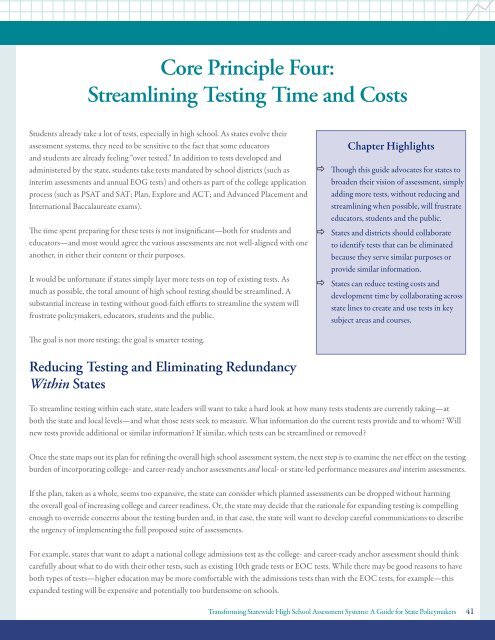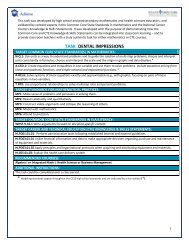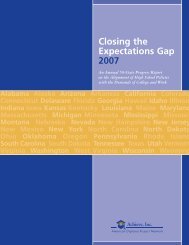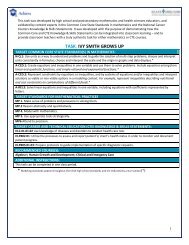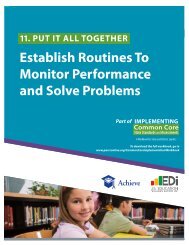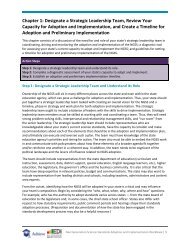Transforming Statewide High School Assessment Systems: - Achieve
Transforming Statewide High School Assessment Systems: - Achieve
Transforming Statewide High School Assessment Systems: - Achieve
Create successful ePaper yourself
Turn your PDF publications into a flip-book with our unique Google optimized e-Paper software.
Core Principle Four:Streamlining Testing Time and CostsStudents already take a lot of tests, especially in high school. As states evolve theirassessment systems, they need to be sensitive to the fact that some educatorsand students are already feeling “over tested.” In addition to tests developed andadministered by the state, students take tests mandated by school districts (such asinterim assessments and annual EOG tests) and others as part of the college applicationprocess (such as PSAT and SAT; Plan, Explore and ACT; and Advanced Placement andInternational Baccalaureate exams).The time spent preparing for these tests is not insignificant—both for students andeducators—and most would agree the various assessments are not well-aligned with oneanother, in either their content or their purposes.It would be unfortunate if states simply layer more tests on top of existing tests. Asmuch as possible, the total amount of high school testing should be streamlined. Asubstantial increase in testing without good-faith efforts to streamline the system willfrustrate policymakers, educators, students and the public.The goal is not more testing; the goal is smarter testing.Chapter <strong>High</strong>lightsThough this guide advocates for states tobroaden their vision of assessment, simplyadding more tests, without reducing andstreamlining when possible, will frustrateeducators, students and the public.States and districts should collaborateto identify tests that can be eliminatedbecause they serve similar purposes orprovide similar information.States can reduce testing costs anddevelopment time by collaborating acrossstate lines to create and use tests in keysubject areas and courses.Reducing Testing and Eliminating RedundancyWithin StatesTo streamline testing within each state, state leaders will want to take a hard look at how many tests students are currently taking—atboth the state and local levels—and what those tests seek to measure. What information do the current tests provide and to whom? Willnew tests provide additional or similar information? If similar, which tests can be streamlined or removed?Once the state maps out its plan for refining the overall high school assessment system, the next step is to examine the net effect on the testingburden of incorporating college- and career-ready anchor assessments and local- or state-led performance measures and interim assessments.If the plan, taken as a whole, seems too expansive, the state can consider which planned assessments can be dropped without harmingthe overall goal of increasing college and career readiness. Or, the state may decide that the rationale for expanding testing is compellingenough to override concerns about the testing burden and, in that case, the state will want to develop careful communications to describethe urgency of implementing the full proposed suite of assessments.For example, states that want to adapt a national college admissions test as the college- and career-ready anchor assessment should thinkcarefully about what to do with their other tests, such as existing 10th grade tests or EOC tests. While there may be good reasons to haveboth types of tests—higher education may be more comfortable with the admissions tests than with the EOC tests, for example—thisexpanded testing will be expensive and potentially too burdensome on schools.<strong>Transforming</strong> <strong>Statewide</strong> <strong>High</strong> <strong>School</strong> <strong>Assessment</strong> <strong>Systems</strong>: A Guide for State Policymakers 41


